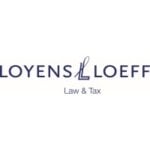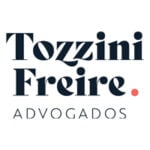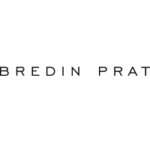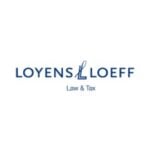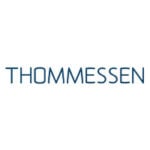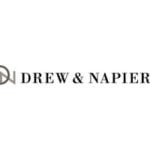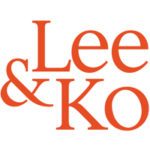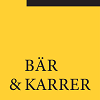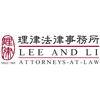-
What proportion of transactions have involved a financial sponsor as a buyer or seller in the jurisdiction over the last 24 months?
In 2023, Chinese M&A market fell to multi-year lows, with total value down 28% compared to the figures in 2022, according to the PwC M&A 2023 Review and 2024 Outlook (the “PwC Review”). The PwC Review shows that the aggregate deal value of financial buyers fell to US$151.3 billion in the year of 2023, involving 4,934 deals (which shows a value decline of 37% and a volume decline of 27%, each as compared to the respective figures in 2022). That means, 59.78% of all M&A transactions (constituting 48.34% of the aggregate deal value of the M&A transactions in 2023) were closed by financial buyers and the remaining 40.22% of all M&A transactions (constituting 51.66% of the aggregate deal value of the M&A transactions in 2023) were closed by strategic buyers.
-
What are the main differences in M&A transaction terms between acquiring a business from a trade seller and financial sponsor backed company in your jurisdiction?
One of the main differences between a financial sponsor and a trade seller is the degree of participation in the target company’s operation, where, on one hand, the trade seller (or the founder) is relatively much more active in operating the target company. Therefore, when a purchaser acquires shares from, for example, the founder of a target company, it would expect the founder to make broad representations and warranties relating to the target company’s business and operation. Such representations and warranties on the operation of the target company would normally include due authorization and capacity, full, complete and accurate disclosure of legal, business and financial due diligence materials, compliance with applicable laws, and timely payment of relevant taxes, etc. On the other hand, financial sponsors, who normally don’t participate in the daily operation of the company, are usually willing to make only limited representations and warranties, e.g., their capacity to enter the deal, and clean title to the shares to be sold. Correspondingly, the indemnification obligation and liability cap that a financial sponsor is willing to bear thereunder is also much more limited than those bearable by a trade seller. Financial sponsors are less likely to commit to an indemnity obligation for a long time because, for example, an investment fund usually has a life of 8 to 10 years only. Moreover, where a trade seller has more than one business and some of which are horizontally related (for example, on different levels of a same supply chain), the M&A terms may also address the business relationships among the related companies, given the change of the ownership and control of one of them.
-
On an acquisition of shares, what is the process for effecting the transfer of the shares and are transfer taxes payable?
On one hand, the transfer of shares by foreign investors in a non-public limited liability company will become effective once parties register with the State Administration for Market Regulation or its competent local branches (“SAMR”), as long as the target business does not fall under a list specified in the Special Administrative Measures for Foreign Investment Access by the Ministry of Commerce (“MOFCOM”) and the National Development and Reform Commission (as amended from time to time, the “Negative List”). Otherwise, pre-approval or special permit from the MOFCOM shall be obtained before any transaction taking place. On the other hand, acquiring shares of public listed companies through secondary market involves registration with the China Securities Depository and Clearing Corporation, while acquisition of certain threshold percentage (e.g., 5%, 20% and 30%) of shares of public listed companies will impose on an investor different levels of obligations to report to the China Securities Regulatory Commission (the “CSRC”). After the completion of a private company’s share transfer, parties will submit the agreements to the relevant Chinese tax authority and pay applicable taxes in accordance with Chinese tax law. The most relevant taxes relating to share transfer are corporate/individual income taxes and stamp duties. Stamp duties need to be paid by both parties upon execution of the legal documents. Income taxes are determined based on the type of sellers in the transaction. If the seller is a PRC corporate taxpayer, 25% income tax on profits are payable and such tax could apply to worldwide profits in connection with the company (including those derived from share transfers) pursuant to the Enterprise Income Tax Law of the PRC. Lower tax rates may apply to small-scale enterprises engaging in encouraged business activities including but not limited to high-technology companies. If the seller is an individual, 20% tax rate applies to income such as interest, dividends and transfers of property that derives from such individual investor. In addition, none PRC tax resident is subject to 10% or lower withholding tax on capital gains arising from the transfer. Moreover, value added tax applies when acquiring shares of a public listed company.
-
How do financial sponsors provide comfort to sellers where the purchasing entity is a special purpose vehicle?
In transactions where the purchasers are prestigious financial sponsors with extensive financial resources, the sellers might agree to sign an agreement with the special purpose vehicle without obtaining any comfort from the parent fund. If a seller has more negotiation leverage, the purchaser might have to provide comfort to the seller. Such comfort can be provided in forms such as equity commitment letters, debt commitment letters, signing escrow, etc. On or prior to the signing of the purchase agreement, the purchaser can provide to the seller equity commitment letters (signed between the parent fund and the purchasing entity) and/or debt commitment letters (signed between the borrower and the lender) evidencing that the purchasing entity will be made available sufficient funds from its parent fund to make the acquisitions. The sellers in some cases might also request the buyer’s parent to provide its financial statement, although such request will usually face great resistance from the purchaser for confidentiality reasons. Signing escrow is another mechanism for providing comfort to the seller. The purchaser may agree to put the signature pages in the seller’s or the seller legal counsel’s hand prior to the expected date of signing for escrow, and such signature pages shall only be released upon the purchaser’s subsequent authorization. Under this arrangement, no official contract will be signed until closing (i.e., simultaneous signing and closing). As an alternative solution commonly seen, both parties may entrust a reputable bank to receive the purchase price and release it (in lump sum or in instalments) upon satisfying the agreed closing conditions, to ease concern from the seller.
-
How prevalent is the use of locked box pricing mechanisms in your jurisdiction and in what circumstances are these ordinarily seen?
The two commonly used pricing mechanisms in M&A (and private equity) deals in China are locked box approach and completion accounts approach. When applying the locked box approach, the purchase price agreed upon by both parties is a fixed price. In the completion accounts approach, the purchase price will be adjusted after closing in accordance with the financial statements of the target companies on or immediately prior to the closing. Currently, they are both widely used in China. In general, the locked box approach is more preferrable by sellers because the purchasers will have to rely on the financial statements prepared by the sellers as of the dates mutually agreed upon by both parties prior to signing to determine the enterprise value of the target companies. After the signing of agreements, the risk of the value decrease of the target companies prior to closing is borne by the purchasers. Therefore, the purchasers will usually want very strict representations and warranties and covenants with respect to the operation and financial conditions of the target companies between the financial statement date and date of closing. Moreover, it is also less complex than the completion accounts approach and involves less transaction costs. Hence, comparatively speaking, locked box approach is more ordinarily seen in sellers’ market where the sellers usually have more negotiating leverage than the purchasers (for example, when the sale is conducted through an auction and the seller can receive bids from multiple purchasers) and/or small transactions where both parties want to keep the transaction process simple.
-
What are the typical methods and constructs of how risk is allocated between a buyer and seller?
Risk allocation between a buyer and a seller involves various aspects of the deal. For example, in a private M&A deal, the buyer usually conducts a thorough due diligence. However, in recent years, some large M&A projects were conducted through a public bidding process, and the seller would control the process of due diligence, which would expedite the process and enhance the efficiency but increase the buyer’s risk exposure. The two pricing mechanisms discussed in Question 5 also demonstrate different degrees of risk allocation, with the locked boxed approach being riskier to the buyer because it will have to bear the risk of enterprise value decrease between the date of singing and the date of closing. Regarding the transaction agreements, the sections of representations and warranties will significantly affect the risk allocation between the parties. A broader scope of the representations and warranties will impose more risks on the seller, but the use of such terms and qualifiers as “Material Adverse Effect” and “to the best knowledge of the seller” will limit the scope of the seller’s representations and warranties and thereby reducing the seller’s risks. The parties may also negotiate on the level and method of disclosure and limitation on the seller’s liabilities to make further allocation of risks between themselves.
-
How prevalent is the use of W&I insurance in your transactions?
W&I insurance has been introduced to China market for more than 10 years, and are increasingly active among the parties to M&A (and private equity) transactions for the following reasons we observed: (i) a big-size transaction oftentimes involves auction process which makes it almost impossible for the purchaser to have a thorough due diligence investigation due to its limited access to seller data and the given time pressure; (ii) the W&I insurance can cover the losses of a purchaser beyond the seller’s liability cap (if any) agreed upon in the transaction documents; (iii) many sellers, especially the financial sponsors, wish to realize a clean exit from the transaction, as they need to be certain about the sales proceeds distributable to their investors, without bearing contingent liability arising from a purchaser claim; and (iv) some purchasers may be reluctant to claim against the seller, aiming to maintain good relationship with the seller or seller’s parent. In contrast with a typical domestic transaction in China where both parties are Chinese entities who are familiar with the legal and policy risks under the Chinese law, W&I insurances are more often used in cross-border transactions, in particular the outbound investments in targets of a foreign country made by Chinese purchasers. A regulation promulgated by the State-owned Assets Supervision and Administration Commission in 2017 even highly recommends that all state-owned or controlled enterprises at the central government level utilize insurance tools for risk avoidance purpose when they make outbound investment. Recently, more standardized W&I insurance products have been put into China’s M&A market to accommodate various needs of the relevant players.
-
How active have financial sponsors been in acquiring publicly listed companies?
Financial sponsors are always playing an active role in acquiring shares of companies listed in China or overseas. However, in publicly disclosed cases of recent years where controlling stake of a Chinese listed company is acquired, more than half of such deals are driven or successfully consummated by state-owned or backed investors, most of which are industry players from upstream and downstream industries. Typical ways for acquiring shares in Chinese listed companies include: (i) privately negotiated transaction, (ii) secondary market trading, (iii) tender offer, and (iv) indirect deal structure devised to acquire shares in the controlling shareholder of the listed companies. Thanks to the set-up and booming of Sci-Tech innovation board (SSE STAR Market) which provides a test field for China’s innovation in the securities market since 2018 as well as recent regulatory developments along the direction of marketization in the QFII/RQFII system and refinancing rules for listed companies in 2019 and 2020 respectively, the below trends are observed: (i) financial sponsors are seeking earlier stage deal opportunities (e.g., pre-IPO financing) for private companies who have the potential to go public in China, (ii) the QFII system and RQFII system are largely used by foreign financial sponsors to participate in minority investment in Chinese listed companies, and (iii) regulations are loosened to offer more opportunities to financial sponsors for their participation in private placement by Chinese listed companies. In September 2024, the CSRC issued a nation-wide policy to deepen the reform in the area of M&A and restructuring market for listed companies in an effort to promote industrial M&A by listed companies in China, along with the promulgation of draft revisions to Administration Measures on Significant Asset Restructuring of Listed Companies which aim to relax the current regulation on certain kinds of deals and support PE firms’ participation in the relevant M&A and restructuring activities. Although state-owned or backed entities have long played a dominant role in the infrastructure market, “social capitals” including financial sponsors are recently encouraged by the Chinese government to participate in large-size PPP projects by forming a special purpose fund or running a joint venture with other qualified market players.
-
Outside of anti-trust and heavily regulated sectors, are there any foreign investment controls or other governmental consents which are typically required to be made by financial sponsors?
There are no governmental consents or control procedures which target to, deliberately or discriminately, govern or restrict foreign investment by financial sponsors. Apart from the anti-trust review and industry-specific approvals, government consents or control procedures for foreign investment include: (i) filing with the National Development and Reform Commission (including its competent local counterparts, the “NDRC”) and MOFCOM, or approval by NDRC and MOFCOM if the investment sector falls within the scope of the Negative List, (ii) national security review (“NSR”) conducted by a joint committee led by MOFCOM and NDRC, where the foreign investments involve elements of national defense or national security (military industry, location adjacent to military facilities, etc.) or aim to acquire an effective control over targets engaged in key industries (e.g., agricultural products, energy and resources, infrastructure, transportation services or key technologies or important manufacturing of equipment and machinery having a bearing on national security), and (iii) foreign exchange control imposed by the State Administration of Foreign Exchange on capital inflow and outflow relating to foreign investment/divestment and remittance abroad of realized proceeds. The PRC Foreign Investment Law (“FIL”) further deregulated the market access to foreign investors and the related foreign exchange control and granted national treatment to them. Although the FIL remains silent as to whether a variable interest entity (“VIE”) arrangement typically employed by foreign financial sponsors to bypass the regulatory scrutiny could be treated as “foreign investment” in China and thereby be regulated by FIL, so far no law or regulation has been enacted to invalidate or challenge the validity or legality of such VIE arrangement.
-
How is the risk of merger clearance normally dealt with where a financial sponsor is the acquirer?
Acquisition of a minority stake in a target by financial sponsors may still trigger the acquiring party’s obligation of declaring to SAMR for merger clearance review, if the acquiring party gains control (or even more or more investors act in concert to gain a joint control) over the target through the transaction and any statutory threshold is satisfied. According to the relevant guiding opinions from SAMR, the test for “control” should take into account various legal and factual factors, including, among others, voting mechanism of shareholders’ or board meetings. Thus, if a financial sponsor who acquired minority interest is granted under the shareholders’ agreement and/or articles of associations of the target a right to veto on certain “blacklist” matters of the target relating its operation (e.g., business plan, budget, appointment and removal of CEO and CFO, branch/subsidiary setup and closedown), whether at the shareholder level or board level, it may be viewed as acquiring de facto control over the target, alone or in concert with others. To manage the risk of triggering merger clearance, the acquiring party should think carefully to narrow down the scope of “veto” matters so as to avoid being regarded as taking control of the target’s daily operation. Where substantial risk of failure to obtain merger clearance exists with a particular transaction, an acquiring party may consider: (i) making the receipt of merger clearance a condition precedent for it to close the deal and asking for a breakup fee from the selling party/target, and (ii) requiring the selling party/target to redeem the purchased shares of the acquiring party with agreed annual return if the transaction is invalidated or unwound by order of SAMR after the closing. Since 2020, cases publicly released by SAMR have shown that acquisitions involving a VIE arrangement can be the target transaction for merger clearance review. Major developments in the legislation of this area include: (i) the amended PRC Anti-monopoly Law (“AML”) taking effect in August 2022 largely increases the law-violating costs for merger activities by setting an administrative fine up to RMB 5million or 10% of the annual turnover of the violator(s) (as the case may be) instead of up to RMB 500,000 applied before the AML amendments; and (ii) in January 2024, the State Council amended the relevant regulation to increase the statutory thresholds on the merger participators’ revenues, as a result of which, it would be more difficult for small-to-medium sized market players to trigger the merger clearance review in their transactions.
-
Have you seen an increase in (A) the number of minority investments undertaken by financial sponsors and are they typically structured as equity investments with certain minority protections or as debt-like investments with rights to participate in the equity upside; and (B) ‘continuation fund’ transactions where a financial sponsor divests one or more portfolio companies to funds managed by the same sponsor?
Although the number of deals declines a lot in 2023 and 2024, most of the investments undertaken by financial sponsors were structured as acquiring a minority stake in the targets. This is because: (i) the overly high valuation of China-based companies these years has increased the risk of financial sponsors (e.g., down-round and lack of liquidity), (ii) the founding shareholder(s) want to retain their control over the target after the transaction, and (iii) in certain industrial sectors, the shareholding percentage of a target is restricted for participation by foreign investors or “social capitals”. In onshore transactions equity investments are more observed than debt-like investments, largely due to restrictions imposed by the regulatory bodies on the use of debt-like tools in PE/VC investments and potential dispute arising from the uncertain nature of such debt-like investments; while in offshore China-related transactions, debt-like investments (convertible bond or debt-to-equity bridge loan) are commonly seen as an alternative tool to satisfy different investment objectives. Minority protection mechanism (e.g., veto right, various rights to prevent anti-dilution) now is widely adopted in the market practice of China, and besides, valuation-adjustment mechanism or performance-based triggering event for redemption which are rarely seen in other markets are frequently considered by Chinese investors. Where a fund’s term expires, sale of its equity interest in certain portfolios to a newly-formed continuation fund managed by the same sponsor or an S fund or sale of its LPs’ fund interest to an S-fund are more considered by the investors or more seen in the market than before, to solve the conflict between GPs’ desire to maintain the existing portfolios and LPs’ desire to exit from the same.
-
How are management incentive schemes typically structured?
For a portfolio company incorporated in China, the management team is usually incentivized indirectly through granting thereto of options to purchase the “shares” of a limited liability partnership, which will hold the equity interest or shares of the portfolio company. The founder(s) of the target company, or a company set up by the founder(s) will usually act as the general partner of the limited liability partnership, while the incentivized management team members, upon exercising the vested options, will become the limited partners of the limited liability partnership. Nevertheless, it is common that the incentivized persons entrust the founder(s) to hold the equity in the limited liability partnership, instead of being registered with the authority as the limited partners. For a portfolio company not incorporated in China (usually in an offshore jurisdiction, e.g., Cayman Islands and British Virgin Islands), the management incentive plan is usually similar to that in most other developed common law countries in terms of reservation, granting, vesting, and exercising of options/restricted stock units. We do note that since China still maintains a foreign exchange control regime, the Chinese participants so incentivized will face PRC foreign exchange control barrier to exercise their vested options unless they complete relevant PRC foreign exchange control registrations.
-
Are there any specific tax rules which commonly feature in the structuring of management's incentive schemes?
Generally, the employees so incentivized will be subject to individual income tax at the time of exercise as ordinary incomes subject to progressive individual income tax rates. Chinese tax rules do provide that if certain criteria are met, the incentivized employee may defer the tax payment till the time of disposal, and the gains so generated will be taxed as capital gains (usually lower than regular income taxed at the progressive individual income tax rates). Such criteria include, without limitation, (i) proper authorization of the incentive plan through the company’s resolutions, (ii) qualifications and number of the incentivized employees, (iii) length of the holding period after the granting date (and after the exercise date for options), (iv) the length of the exercise period, and (v) the sector of business the company engages in.
-
Are senior managers subject to non-competes and if so what is the general duration?
Yes. The labor contract usually provides for non-competes during senior managers’ employment. In addition, senior managers are subject to a statutory non-compete obligation under the company law. After the termination of employment, if expressly agreed in the labor contract or a separate non-compete agreement, the company may subject the senior managers to additional contractual non-compete obligation for an agreed term no more than two (2) years. In exchange for senior managers’ observance of such post-employment non-compete obligation, the company must pay economic compensation to such senior managers in the amount agreed under such employee’s labor contract or the separate non-compete agreement. If the labor contract or the separate non-compete agreement is silent on the compensation amount, relevant legal interpretations provide that the compensation amount shall not be lower than 30% of the employee’s average monthly salary in the twelve (12) months before the employment termination, or the local minimum wage, whichever is higher. If a senior manager is also a shareholder of the company, then he or she might be subject to a non-compete obligation with a longer period if so contractually required, such as under the shareholders agreement.
-
How does a financial sponsor typically ensure it has control over material business decisions made by the portfolio company and what are the typical documents used to regulate the governance of the portfolio company?
A financial sponsor typically achieves its control over its portfolio company’s material business decisions through (i) proper design of the company’s corporate governance, e.g., shareholders meeting, board and executive team composition, and selection of the company’s legal representative, and (ii) voting arrangements, e.g., the financial sponsor’s veto right under certain matters, exercised directly or through the director designated by it. The typical documents regulating the governance of the portfolio company include the shareholders agreement or a joint venture contract, the articles of association, or other constitutional documents of the portfolio company.
-
Is it common to use management pooling vehicles where there are a large number of employee shareholders?
Yes. If a large number of employees participate in the company’s incentive scheme, a holding platform will be set up, usually in the form of a limited liability partnership, of which the founder(s) or a company set up by the founder(s) will act as the general partner(s). The holding platform will serve as a management pooling vehicle to hold the shares or equity interest issued to the incentivized employees under such scheme. Since the founder(s) will act as the general partner(s) of the holding platform, this arrangement can achieve a balance between employee incentivization and operational efficiency. Multiple platforms might be necessary due to the statutory limit on the maximum number of partners (50 partners) of a limited liability partnership. Other forms of management pooling vehicles can also be observed in the market, including trust, assets management plan, etc.
-
What are the most commonly used debt finance capital structures across small, medium and large financings?
In terms of debt finance capital structures, it is normally referred to as debt financing instruments. The commonly used types of debt financing instruments are as follows: i) loans from non-financial institutions, commonly used in debt financing with a small amount and flexible terms; ii) loans from financial institutions, such as bank loans and trust loans, with a medium amount and boilerplate clauses; iii) bonds, issued by a company pursuant to statutory procedures and for which face value and interest payment are agreed to be made by a specific deadline and at a fixed rate, mainly for a large amount. According to our experience, PRC companies do not generally have the ability to provide credit guarantee to a lender through offshore debt financing, and thus commercial bank loans are most commonly used in onshore debt financings. With regards to the capital structure, the creditors usually would request borrowers to provide security interests over their assets (including but not limited to shares and real properties) or guarantee to secure repayment of the debt. According to PRC laws and regulations, private equity funds are not allowed to invest in the area of the debt financing directly. Please refer to Q21 for details.
-
Is financial assistance legislation applicable to debt financing arrangements? If so, how is that normally dealt with?
In general, the concept of financial assistance refers to the situation where a company provides such financial support as gift, loan, guarantee, or exemption from obligations to a person who has acquired or is to acquire that company’s shares or bonds (“investor”). In accordance with Article 163 of the newly amended PRC Company Law (effective as of July 1st, 2024), except for implementation of an employee stock incentive plan, a company shall not provide gifts, loans, guarantees or other financial assistance for investors to acquire shares of the company and its parent company, unless it is approved, for the benefit of the company, by the company’s shareholders’ meeting or its board of directors upon a resolution by two-thirds or more of all directors made in accordance with the company’s articles of association or authorization of the shareholders’ meeting, and the total cumulative amount of financial assistance shall not exceed 10% of the company’s total issued share capital. Article 163 also provides that, in case of violations of the aforesaid requirements that result in losses to the company, the responsible directors, supervisors, and senior management shall be held liable for such losses. Public company stock issuers and public or private corporate bond issuers are prohibited from using their own resources to provide any form of financial assistance to their investors. For example, Article 45 of the Administrative Measures on Issuance and Trading of Corporate Bonds, which was amended by CSRC and became effective on October 20, 2023, provides that the issuer and its controlling shareholders, actual controller, directors, supervisors, senior management and the underwriter shall not provide financial assistance to investors participating in subscription directly or through any other stakeholders. The reason for this provision is that if investors are “lured” to subscribe for the bonds with other financial interests, the coupon rate cannot accurately reflect the risk and value of the bonds, which will disrupt the free market, and it is unfair to other small or individual investors who do not have access to these “lures”.
-
For a typical financing, is there a standard form of credit agreement used which is then negotiated and typically how material is the level of negotiation?
In terms of the typical debt financing, such as loans from financial institutions, usually a standard form of credit agreement will be provided by the financial institutions. But provisions, including but not limited to, the loan amount, loan term, interest rate of the credit agreement are still negotiable between lenders and borrowers. As a result, negotiations on these provisions of credit agreements between parties become vital. As for the bonds, there will be a standard form of credit agreement (normally referred to as “indenture”) stipulated by the bond issuers of which all terms are determined by the issuers and third-party agencies, such as bond rating agencies who are responsible for the credit rating of the bonds. The issuers and investors will not negotiate any provisions of the indenture. The only thing that investors need to decide is whether to subscribe or not.
-
What have been the key areas of negotiation between borrowers and lenders in the last two years?
The key areas of negotiation between borrowers and lenders include, inter alia, the loan amount, loan term, interest rate, calculation and settlement of the loan, guarantee, interest on late payments, fees, and remedies, etc. As credit defaults of corporate bonds occur more frequently in recent three years, especially for the debt crisis and default events in the real estate industry, lenders tend to pay more attention to the terms of guarantee and remedies.
-
Have you seen an increase or use of private equity credit funds as sources of debt capital?
According to relevant regulations, private fund managers shall comply with the specialized operation principle which means that the private fund managers shall only be involved in one of the three areas, namely, private equity funds, private securities funds and other private funds. According to relevant regulations, private equity funds are not allowed to invest in the area of debt financing, except that private equity funds may provide loans or guarantees with a period of less than one year to their investees in accordance with the investment agreements for the purpose of equity investment. Hence, the so-called “private equity credit funds” are not allowed to be incorporated or registered in the PRC.
China: Private Equity
This country-specific Q&A provides an overview of Private Equity laws and regulations applicable in China.
-
What proportion of transactions have involved a financial sponsor as a buyer or seller in the jurisdiction over the last 24 months?
-
What are the main differences in M&A transaction terms between acquiring a business from a trade seller and financial sponsor backed company in your jurisdiction?
-
On an acquisition of shares, what is the process for effecting the transfer of the shares and are transfer taxes payable?
-
How do financial sponsors provide comfort to sellers where the purchasing entity is a special purpose vehicle?
-
How prevalent is the use of locked box pricing mechanisms in your jurisdiction and in what circumstances are these ordinarily seen?
-
What are the typical methods and constructs of how risk is allocated between a buyer and seller?
-
How prevalent is the use of W&I insurance in your transactions?
-
How active have financial sponsors been in acquiring publicly listed companies?
-
Outside of anti-trust and heavily regulated sectors, are there any foreign investment controls or other governmental consents which are typically required to be made by financial sponsors?
-
How is the risk of merger clearance normally dealt with where a financial sponsor is the acquirer?
-
Have you seen an increase in (A) the number of minority investments undertaken by financial sponsors and are they typically structured as equity investments with certain minority protections or as debt-like investments with rights to participate in the equity upside; and (B) ‘continuation fund’ transactions where a financial sponsor divests one or more portfolio companies to funds managed by the same sponsor?
-
How are management incentive schemes typically structured?
-
Are there any specific tax rules which commonly feature in the structuring of management's incentive schemes?
-
Are senior managers subject to non-competes and if so what is the general duration?
-
How does a financial sponsor typically ensure it has control over material business decisions made by the portfolio company and what are the typical documents used to regulate the governance of the portfolio company?
-
Is it common to use management pooling vehicles where there are a large number of employee shareholders?
-
What are the most commonly used debt finance capital structures across small, medium and large financings?
-
Is financial assistance legislation applicable to debt financing arrangements? If so, how is that normally dealt with?
-
For a typical financing, is there a standard form of credit agreement used which is then negotiated and typically how material is the level of negotiation?
-
What have been the key areas of negotiation between borrowers and lenders in the last two years?
-
Have you seen an increase or use of private equity credit funds as sources of debt capital?


